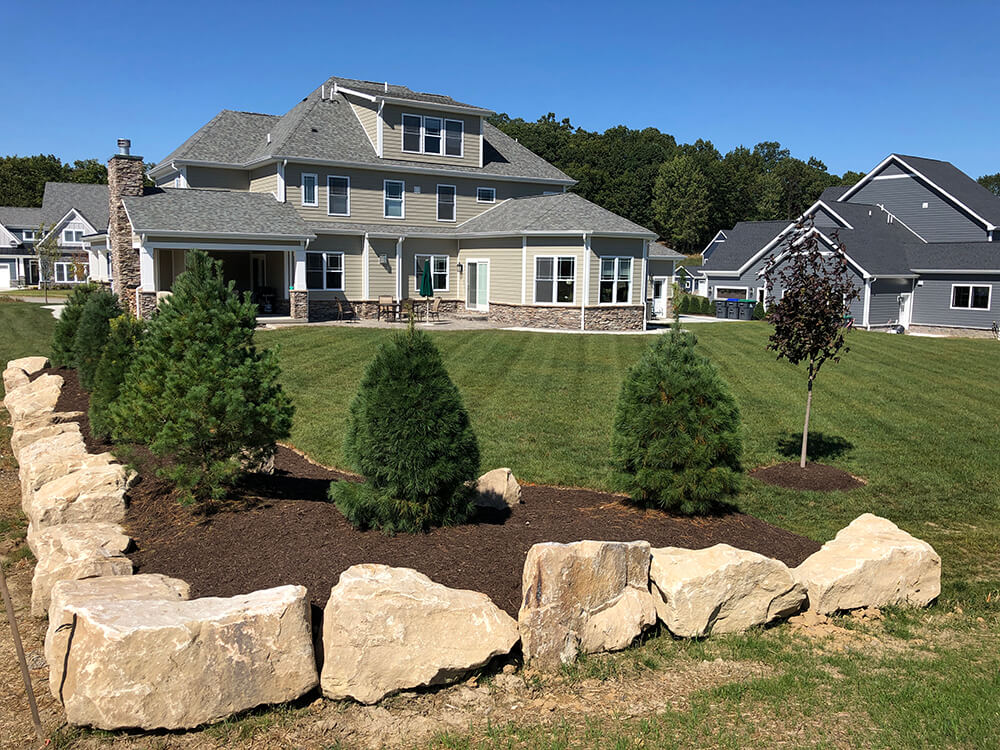
Before discussing what is the cheapest rock to use for landscaping, it’s essential to understand what landscaping rocks are.
What are Landscaping rocks ?
Landscaping rocks are a fundamental element in the art and science of landscape design, serving both decorative and functional purposes in outdoor spaces. These rocks, which can be natural or manufactured, come in an extensive array of shapes, sizes, colors, and textures, making them incredibly versatile for a wide range of landscaping applications. Whether you are looking to create a serene garden, a sturdy pathway, a dramatic water feature, or simply enhance the visual appeal of your yard, landscaping rocks offer a durable and aesthetically pleasing solution.
One of the primary benefits of using landscaping rocks is their ability to provide a natural and timeless look to any outdoor area. Unlike organic mulches, rocks do not decompose, which means they offer a long-lasting option that requires minimal maintenance. This makes them particularly attractive for homeowners and landscapers who are looking to create sustainable and low-maintenance garden designs. Additionally, rocks can help with soil erosion control, moisture retention, and weed suppression, further enhancing their practical value.
Landscaping rocks can also be used to define spaces within a garden, such as creating borders around flower beds or vegetable gardens, outlining walkways, or building retaining walls. Their varied sizes and types allow for creative flexibility, enabling the creation of intricate rock gardens, zen gardens, or naturalistic settings that blend seamlessly with the surrounding environment. Moreover, the diversity in color and texture of these rocks can complement a wide range of plantings, adding depth and contrast to the overall landscape design.
Why do we need Landscaping rocks ?
Landscaping rocks are a crucial component in the design and maintenance of outdoor spaces, offering a blend of aesthetic and practical benefits. Their importance extends beyond mere decoration, providing solutions for a variety of landscaping challenges and enhancing the overall functionality and appeal of gardens, yards, and other exterior environments.
Aesthetic Enhancement
One of the primary reasons for using landscaping rocks is their ability to significantly enhance the visual appeal of outdoor spaces. Rocks add texture, color, and form to the landscape, creating a more dynamic and interesting environment. They can be used to create focal points, such as rock gardens or boulder features, which draw the eye and add a sense of natural beauty. The variety of rocks available—from smooth river stones to rugged lava rocks—allows for endless creative possibilities, enabling landscapers and homeowners to tailor the look to their specific tastes and needs.
Low Maintenance
Landscaping rocks are a low-maintenance option compared to organic mulches, which need to be replenished regularly as they decompose. Rocks, on the other hand, are durable and long-lasting, requiring little to no replacement over time. This makes them an ideal choice for those looking to create a sustainable and low-maintenance landscape. Once installed, rocks typically require minimal upkeep, saving time and effort in the long run.
Weed Suppression
Using landscaping rocks can significantly reduce weed growth in garden beds and other areas. When placed over a weed barrier fabric, rocks provide an effective barrier that prevents weeds from taking root and spreading. This not only helps maintain a clean and tidy appearance but also reduces the need for chemical herbicides, promoting a healthier and more environmentally friendly garden.
Soil Erosion Control
Landscaping rocks are excellent for controlling soil erosion, especially on slopes and in areas prone to water runoff. By stabilizing the soil and slowing down the flow of water, rocks help prevent soil erosion and protect the integrity of the landscape. This is particularly important in regions with heavy rainfall or in gardens with significant elevation changes, where erosion can quickly become a major issue.
Improved Drainage
Rocks can improve drainage in areas where water tends to accumulate, such as around the foundation of a house or in low-lying parts of the yard. Crushed stone or gravel can be used to create drainage channels or French drains, directing excess water away from problem areas and preventing water damage to plants and structures. This is especially beneficial in areas with poor natural drainage or heavy clay soils.
Versatility in Design
The versatility of landscaping rocks makes them suitable for a wide range of applications and styles. They can be used to create naturalistic settings, such as rock gardens and dry riverbeds, or more formal designs, like neatly edged pathways and patios. Rocks can be combined with other landscaping elements, such as plants, water features, and outdoor furniture, to create a cohesive and harmonious outdoor space.
Temperature Regulation
Certain types of rocks, such as lava rocks, have the ability to retain heat and moderate soil temperature. This can be beneficial for plants that thrive in warmer conditions, extending their growing season and protecting them from temperature fluctuations. Additionally, the use of rocks can help retain soil moisture by reducing evaporation, providing a more stable environment for plant growth.
Eco-Friendly Option
Landscaping rocks are an eco-friendly choice for many reasons. They are a natural product that does not require the use of synthetic chemicals or pesticides. Additionally, rocks can be sourced locally, reducing the environmental impact associated with transportation. Their durability also means that they do not need to be replaced frequently, reducing waste and the need for ongoing production.
Creating Functional Spaces
Rocks can be used to create functional outdoor spaces, such as patios, walkways, and seating areas. Flagstones and pavers provide a stable and attractive surface for outdoor living areas, while gravel paths offer a permeable and aesthetically pleasing alternative to traditional concrete or asphalt. These functional spaces enhance the usability of the landscape, making it more enjoyable and accessible.
Here are different types of landscaping rocks for you to use:
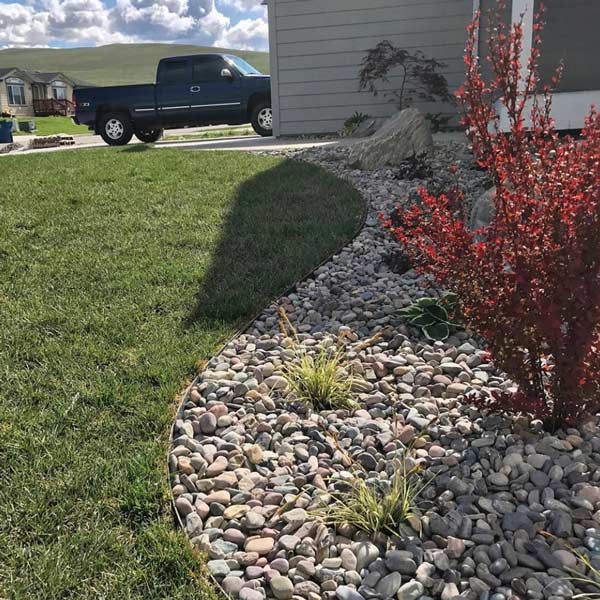
1.River Rock
River rock is a type of smooth, rounded stone that is naturally shaped by the action of water over time. These rocks are commonly found in riverbeds and streams, which give them their characteristic smooth and polished appearance. They come in a variety of sizes, ranging from small pebbles to larger stones, and are available in a wide range of colors including shades of brown, gray, white, and mixed tones.
Pros of River Rock
- Aesthetic Appeal:
- River rocks provide a natural and polished look that enhances the beauty of any landscape. Their smooth, rounded shapes and varied colors can complement many garden styles.
- Durability:
- These rocks are incredibly durable and can withstand harsh weather conditions without deteriorating, making them a long-lasting option for landscaping.
- Low Maintenance:
- Unlike organic mulches, river rocks do not decompose and require minimal upkeep. They do not need to be replaced regularly, saving time and resources.
- Weed Suppression:
- When used with a weed barrier fabric, river rocks can effectively suppress weed growth, keeping garden beds neat and low-maintenance.
- Erosion Control:
- River rocks are excellent for controlling erosion, especially on slopes or in areas prone to water runoff. Their weight and stability help keep soil in place.
- Improved Drainage:
- These rocks can improve drainage in areas where water tends to collect. They allow water to flow through and around them, reducing the risk of waterlogging.
Cons of River Rock
- Cost:
- River rocks can be more expensive than other types of landscaping materials, such as mulch or crushed stone. The cost can add up, especially for large areas.
- Installation Effort:
- Placing river rocks can be labor-intensive, particularly if a large area needs to be covered. Moving and arranging heavy stones requires significant effort.
- Heat Retention:
- River rocks can retain heat, which might not be ideal for all plants. In hot climates, they can increase soil temperature, potentially stressing certain types of plants.
- Compaction:
- Over time, river rocks can settle and compact, potentially reducing their effectiveness in improving drainage or covering the soil adequately.
Where and How to Use River Rock
Water Features:
- Ponds and Waterfalls: River rocks are ideal for lining ponds, streams, and waterfalls, providing a natural look and helping to create a balanced ecosystem.
- Dry Riverbeds: These rocks can be used to create dry riverbeds that mimic the appearance of a flowing stream, adding texture and interest to the landscape.
Garden Beds and Borders:
- Ground Cover: River rocks can be used as ground cover in garden beds, offering a clean and tidy appearance while suppressing weeds and improving drainage.
- Edging: Use river rocks to edge garden beds, pathways, or driveways, creating a defined and attractive border.
Pathways and Walkways:
- Decorative Paths: Smaller river rocks can be used to create decorative garden paths. Their smooth surface provides a comfortable walking experience and adds visual appeal.
- Stepping Stones: Larger river rocks can be used as stepping stones, creating a natural and inviting path through the garden.
Erosion Control:
- Slopes and Hillsides: Place river rocks on slopes or hillsides to help prevent soil erosion. Their weight and stability help keep the soil in place during heavy rains.
- Rain Gardens: Incorporate river rocks into rain gardens to aid in drainage and reduce runoff. They help direct water flow and prevent soil erosion.
Planters and Pots:
- Top Dressing: Use river rocks as a top dressing in planters and pots. This not only improves the appearance but also helps retain moisture in the soil and prevent weeds.
Landscape Accents:
- Focal Points: Create focal points in the garden by arranging river rocks in eye-catching designs or using them to highlight specific plants or garden features.
- Zen Gardens: River rocks are perfect for creating serene Zen gardens, adding to the peaceful and meditative atmosphere with their smooth texture and natural look.
Pricing
The cost of river rock varies based on several factors, including size, color, and the supplier. Generally, prices range from $50 to $200 per ton. Smaller decorative stones or those in unique colors might be on the higher end of the price range. Additionally, purchasing river rocks in bulk can sometimes reduce the overall cost.
- Small River Rocks (1/2″ – 3/4″): $50 – $100 per ton
- Medium River Rocks (1″ – 3″): $100 – $150 per ton
- Large River Rocks (3″ – 6″): $150 – $200 per ton
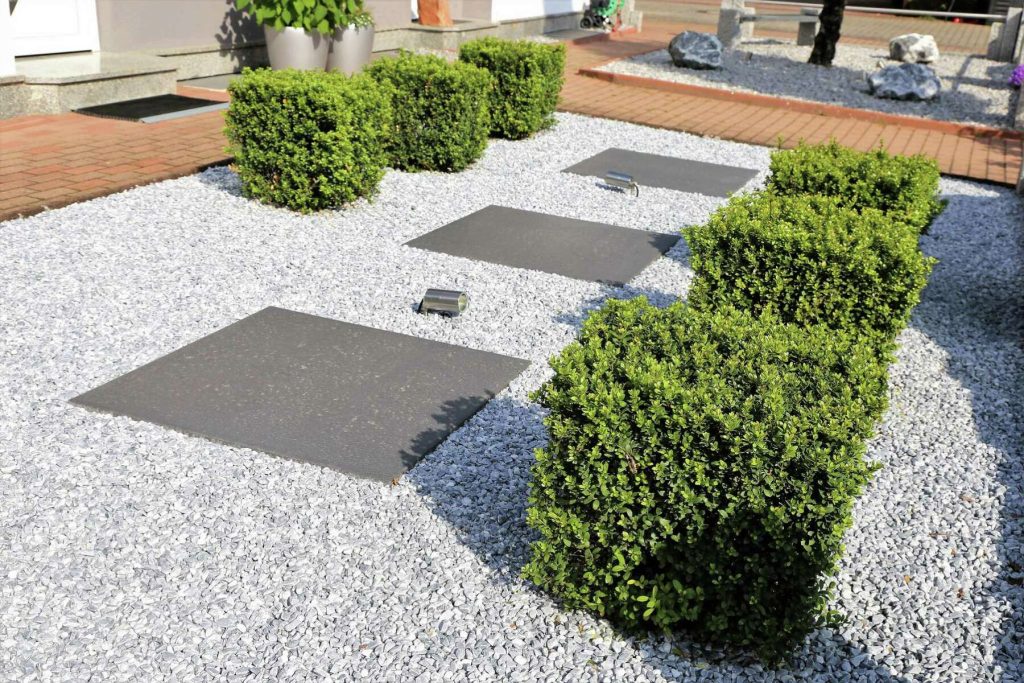
2. Crushed Granite
Crushed granite is a type of gravel made by crushing larger pieces of granite into smaller, more manageable pieces. This material is popular in landscaping and construction due to its durability, natural appearance, and versatility. It comes in various sizes, from small particles known as decomposed granite to larger pieces used for more substantial applications.
Pros of Crushed Granite
- Aesthetic Appeal:
- Crushed granite offers a natural, elegant look that can enhance the visual appeal of any landscape. Its earthy tones blend well with a variety of plants and other landscape elements.
- Durability:
- Granite is an extremely hard and durable material that can withstand heavy traffic and harsh weather conditions, making it ideal for driveways, pathways, and patios.
- Permeability:
- Crushed granite allows water to permeate through it, which helps with drainage and reduces runoff. This makes it an excellent choice for areas where drainage is a concern.
- Low Maintenance:
- Once installed, crushed granite requires minimal upkeep. It does not need to be replaced frequently, and its color remains stable over time, resisting fading.
- Versatility:
- Available in various sizes and grades, crushed granite can be used for a wide range of applications, from garden paths to large-scale construction projects.
Cons of Crushed Granite
- Dust and Tracking:
- Fine particles of decomposed granite can create dust when walked or driven on, which may be a nuisance, especially in dry climates. This dust can also be tracked into homes or other areas.
- Weed Growth:
- While crushed granite can suppress weed growth to some extent, weeds may still emerge, especially if the installation does not include a proper weed barrier.
- Cost:
- Depending on the grade and quality, crushed granite can be more expensive than other types of gravel or organic mulches. However, its durability and low maintenance can offset the initial cost.
- Installation Effort:
- Proper installation of crushed granite requires a solid base and compaction, which can be labor-intensive. Without proper preparation, the material may shift or become uneven over time.
Where and How to Use Crushed Granite
Pathways and Walkways:
- Garden Paths: Crushed granite is perfect for creating garden paths. Its natural appearance and durability make it a popular choice for pathways that blend seamlessly into the landscape.
- Walkways: Use crushed granite to create durable, permeable walkways. It provides a firm surface that can handle foot traffic while allowing water to seep through.
Driveways:
- Durable Surface: Crushed granite is an excellent material for driveways due to its durability and ability to withstand heavy vehicles. It provides a stable, firm surface that can last for many years with minimal maintenance.
Patios and Outdoor Living Areas:
- Patio Base: Use crushed granite as a base layer for patios and other outdoor living spaces. It provides excellent drainage and a stable foundation for pavers or other surface materials.
- Decorative Surface: Crushed granite can also be used as the surface layer for patios, offering a natural look that complements a variety of outdoor furniture and decor.
Garden Beds and Borders:
- Mulch Alternative: Use decomposed granite as a mulch alternative in garden beds. It helps retain soil moisture, reduces weed growth, and adds a clean, finished look to planting areas.
- Borders: Create defined borders around garden beds, trees, or shrubs using crushed granite. It helps keep soil in place and adds a decorative element to the landscape.
Erosion Control:
- Slope Stabilization: Crushed granite can be used to stabilize slopes and prevent soil erosion. Its weight and texture help hold soil in place during heavy rains.
- Drainage Solutions: Incorporate crushed granite into drainage solutions, such as French drains, to improve water flow and prevent erosion in areas with poor drainage.
Construction Projects:
- Base Material: Use crushed granite as a base material for construction projects, such as foundations, retaining walls, and roads. Its stability and drainage properties make it ideal for these applications.
Pricing
The cost of crushed granite varies depending on the size, quality, and location. Generally, prices range from $25 to $50 per ton. Factors influencing the price include the size of the granite pieces, with smaller particles (decomposed granite) typically costing more due to the additional processing required.
- Decomposed Granite (small particles): $30 – $50 per ton
- Crushed Granite (larger pieces): $25 – $40 per ton
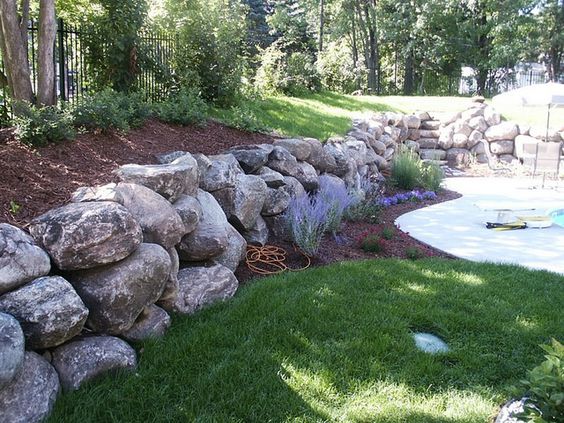
3. Boulders
Boulders are large rocks that come in various shapes, sizes, and colors, and are commonly used in landscaping to create striking visual elements and functional features. Their substantial size and weight make them ideal for a range of outdoor applications, from decorative accents to structural components in gardens and yards.
Pros of Boulders
- Aesthetic Impact:
- Boulders create dramatic focal points in the landscape. Their natural, rugged appearance adds a sense of permanence and grandeur to any outdoor space.
- Durability:
- Extremely durable and long-lasting, boulders can withstand the elements for decades without degrading, making them a sustainable choice for long-term landscaping projects.
- Low Maintenance:
- Once placed, boulders require minimal maintenance. They do not need replacing or significant upkeep, which can save time and resources in the long run.
- Erosion Control:
- Boulders are excellent for stabilizing slopes and preventing soil erosion. Their weight and stability help hold soil in place, even on steep inclines.
- Versatility:
- Available in various sizes, shapes, and colors, boulders can be used in a wide range of landscaping designs, from naturalistic settings to modern, minimalist gardens.
- Wildlife Habitat:
- Large boulders can provide habitats for wildlife, including insects, small mammals, and reptiles, contributing to a balanced and diverse garden ecosystem.
Cons of Boulders
- Cost:
- Boulders can be expensive, particularly larger ones. Prices can range from $100 to $600 or more per ton, depending on size, type, and location.
- Transportation and Installation:
- Due to their size and weight, transporting and installing boulders can be challenging and may require specialized equipment and professional assistance, adding to the overall cost.
- Space Requirements:
- Boulders require significant space, which may not be suitable for smaller gardens or yards. Their large footprint can overwhelm a small area if not used thoughtfully.
- Limited Mobility:
- Once placed, boulders are difficult to move. This makes it essential to carefully plan their placement to avoid the need for future adjustments.
Where and How to Use Boulders
Focal Points:
- Garden Accents: Place boulders strategically in garden beds or lawns to create eye-catching focal points. Their natural beauty and imposing presence can anchor a landscape design.
- Entrances and Gateways: Use boulders to frame entrances, driveways, or pathways, adding a welcoming and grandiose element to the landscape.
Water Features:
- Ponds and Waterfalls: Incorporate boulders into pond and waterfall designs to create a natural, cohesive look. Their size and weight help stabilize these structures and enhance their visual appeal.
- Dry Riverbeds: Use boulders to simulate dry riverbeds, adding texture and interest to the landscape while aiding in drainage and erosion control.
Retaining Walls and Terraces:
- Structural Support: Build retaining walls and terraces with boulders to manage slopes and create flat, usable spaces. Their weight and stability provide excellent structural support.
- Naturalistic Terraces: Create terraced garden beds with boulders, adding layers and depth to the landscape while controlling erosion on slopes.
Seating and Gathering Areas:
- Natural Seating: Use flat-topped boulders as natural seating in outdoor spaces. They provide sturdy, maintenance-free seating options that blend seamlessly into the landscape.
- Fire Pits: Surround fire pits with boulders to create a rustic and inviting gathering area. Boulders can also be used to construct the fire pit itself, offering a natural aesthetic and durability.
Rock Gardens and Xeriscaping:
- Drought-Tolerant Landscapes: Incorporate boulders into rock gardens and xeriscaped areas to reduce water usage and create visually appealing, low-maintenance landscapes.
- Succulent Gardens: Combine boulders with succulents and other drought-tolerant plants to create a striking, water-efficient garden design.
Pricing
The cost of boulders varies significantly based on their size, type, and location. Generally, prices range from $100 to $600 or more per ton. The following are typical price ranges based on size and type:
- Small Boulders (1-2 feet in diameter): $100 – $200 per ton
- Medium Boulders (2-3 feet in diameter): $200 – $400 per ton
- Large Boulders (3+ feet in diameter): $400 – $600+ per ton
In addition to the cost of the boulders themselves, consider transportation and installation fees, which can add significantly to the overall expense.
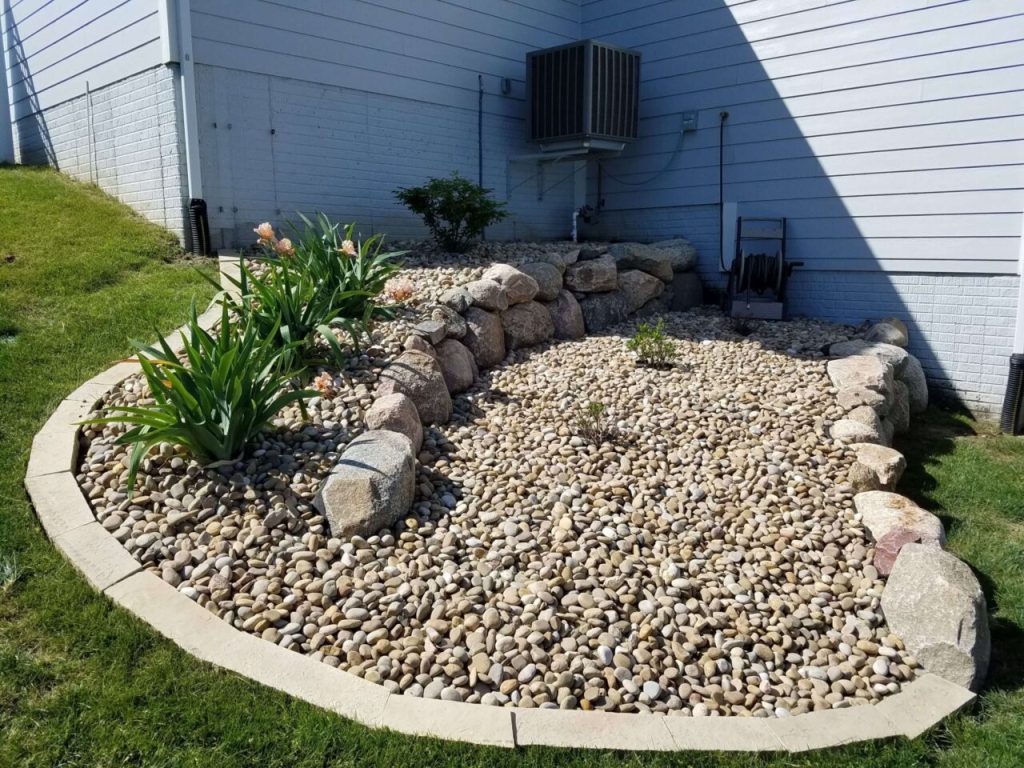
4. Mexican Beach Pebbles
Mexican beach pebbles are smooth, rounded stones that are naturally tumbled by ocean waves along the beaches of Mexico. These stones come in various sizes, ranging from small pebbles to larger rocks, and are known for their distinctive colors, including shades of gray, black, brown, and multicolor blends. Mexican beach pebbles are popular in landscaping for their aesthetic appeal, durability, and versatility.
Pros of Mexican Beach Pebbles
- Natural Beauty:
- Mexican beach pebbles offer a natural and elegant look that adds sophistication to any landscape. Their smooth, rounded shapes and unique colors create visual interest and texture.
- Durability:
- These stones are extremely durable and can withstand harsh weather conditions, including sun, rain, and frost, without deteriorating. They retain their color and finish over time, making them a long-lasting landscaping option.
- Low Maintenance:
- Mexican beach pebbles require minimal maintenance once installed. They do not need to be replaced regularly and can be easily cleaned with a hose or pressure washer to maintain their appearance.
- Weed Suppression:
- When installed over a weed barrier fabric, Mexican beach pebbles can effectively suppress weed growth in garden beds and other areas. This reduces the need for chemical herbicides and manual weeding.
- Versatility:
- Mexican beach pebbles can be used in a variety of landscaping applications, from pathways and driveways to water features and decorative borders. Their smooth texture and natural colors complement a wide range of design styles.
Cons of Mexican Beach Pebbles
- Cost:
- Mexican beach pebbles can be more expensive than other types of landscaping materials, such as gravel or mulch. Prices typically range from $200 to $800 or more per ton, depending on size, color, and quality.
- Availability:
- Mexican beach pebbles may not be readily available in all areas, especially in regions far from coastal sources. Shipping costs can also increase the overall expense of using these stones.
- Heat Retention:
- Dark-colored Mexican beach pebbles can absorb and retain heat, which may not be ideal for plants or areas where people walk barefoot. Lighter-colored stones may be a better option for these situations.
- Slippery Surface:
- When wet, Mexican beach pebbles can become slippery, posing a potential safety hazard, especially on walkways or near water features. Proper drainage and installation techniques can help mitigate this risk.
Where and How to Use Mexican Beach Pebbles
Pathways and Walkways:
- Decorative Paths: Use Mexican beach pebbles to create decorative garden paths and walkways. Their smooth texture provides a comfortable walking surface and adds visual appeal to the landscape.
Driveways and Parking Areas:
- Stable Surface: Install Mexican beach pebbles as a stable surface for driveways and parking areas. Their durable nature can withstand vehicular traffic while maintaining an attractive appearance.
Water Features:
- Ponds and Waterfalls: Use Mexican beach pebbles to line ponds, streams, and waterfalls, creating a natural and visually appealing water feature. Their smooth, rounded shapes complement the flowing water.
Garden Beds and Borders:
- Ground Cover: Use Mexican beach pebbles as ground cover in garden beds and borders. Their natural colors and smooth texture provide a clean, finished look while suppressing weed growth.
Rock Gardens and Zen Gardens:
- Rock Arrangements: Create rock gardens or Zen gardens using Mexican beach pebbles as the primary material. Their smooth, rounded shapes lend themselves well to tranquil and meditative garden designs.
Decorative Accents:
- Focal Points: Use larger Mexican beach pebbles as focal points or accent pieces in the landscape. Their unique colors and shapes draw the eye and add interest to the garden.
Pricing
The cost of Mexican beach pebbles varies depending on size, color, and quality. Prices typically range from $200 to $800 or more per ton. Darker colors tend to be more expensive than lighter colors, and larger stones may also command a higher price.
- Small Pebbles (1/4″ – 1″): $200 – $400 per ton
- Medium Pebbles (1″ – 3″): $400 – $600 per ton
- Large Pebbles (3″ – 5″): $600 – $800+ per ton
In addition to the cost of the stones themselves, consider transportation and installation fees, which can add to the overall expense.
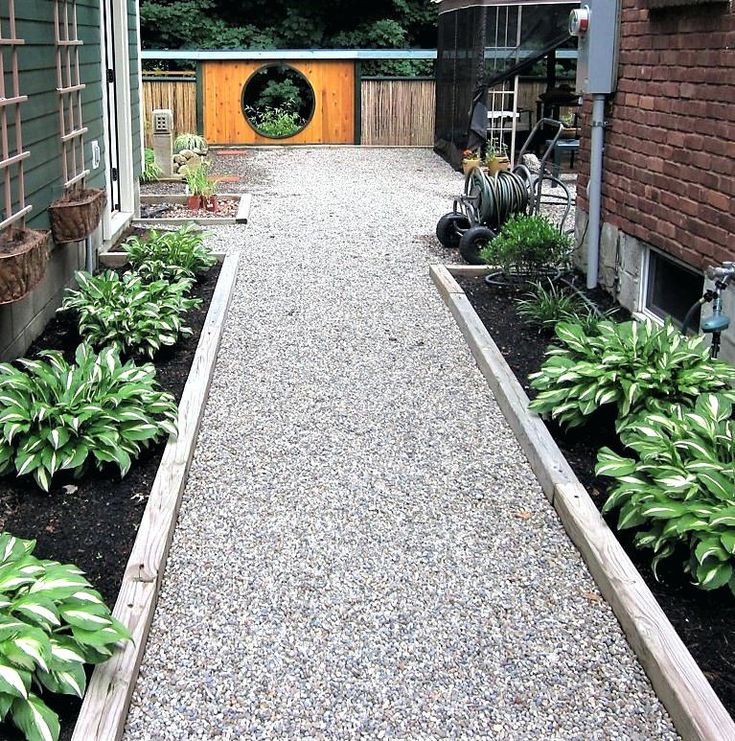
5. Crushed Stone
Crushed stone is a versatile landscaping material made by mechanically crushing larger rocks into smaller fragments. It comes in various sizes and textures, ranging from fine dust to larger stones, and is commonly used in landscaping and construction projects. Crushed stone is valued for its durability, affordability, and versatility, making it a popular choice for a wide range of outdoor applications.
Pros of Crushed Stone
- Affordability:
- Crushed stone is generally more affordable than other landscaping materials, such as pavers or natural stone. It offers excellent value for money, especially for large-scale projects.
- Durability:
- Crushed stone is highly durable and can withstand heavy traffic, weathering, and erosion without losing its structural integrity. It provides a stable, long-lasting surface for various outdoor applications.
- Versatility:
- Available in various sizes and textures, crushed stone can be used for a wide range of landscaping and construction projects. It can be compacted to create solid surfaces or used as loose fill for drainage and decorative purposes.
- Excellent Drainage:
- Crushed stone provides excellent drainage properties, making it ideal for areas prone to water accumulation or erosion. It allows water to permeate through the surface, preventing puddling and runoff.
- Low Maintenance:
- Once installed, crushed stone requires minimal maintenance. It does not need to be replaced regularly and can be easily refreshed by adding a new layer of stone as needed.
Cons of Crushed Stone
- Limited Aesthetic Appeal:
- While crushed stone is functional, it may lack the aesthetic appeal of other landscaping materials, such as natural stone or decorative gravel. Its appearance can be utilitarian rather than decorative.
- Compaction Issues:
- Achieving proper compaction is crucial when using crushed stone as a base material. Improper compaction can lead to settling, uneven surfaces, and decreased stability over time.
- Dust and Tracking:
- Fine particles of crushed stone can create dust when disturbed, which may be a nuisance, especially in dry conditions. Dust can also be tracked indoors or onto paved surfaces.
- Sharp Edges:
- Crushed stone may have sharp edges, especially in larger sizes, which can pose safety hazards, particularly in high-traffic areas or play areas for children and pets.
Where and How to Use Crushed Stone
Driveways and Pathways:
- Driveway Base: Use crushed stone as a base material for driveways, providing a stable and durable surface for vehicles to drive on. It packs tightly to create a solid foundation.
- Pathway Surface: Use crushed stone for pathways and walkways, offering a firm surface for walking and wheeling equipment. It can be compacted for a smooth finish or left loose for a more natural look.
Patios and Outdoor Living Areas:
- Patio Base: Use crushed stone as a base layer for patios and outdoor living areas. It provides excellent drainage and stability for laying pavers or other surface materials.
- Fire Pit Surround: Surround fire pits with crushed stone to create a safe and attractive seating area. It helps prevent fire hazards and provides a stable surface for chairs and tables.
Garden Beds and Borders:
- Mulch Alternative: Use crushed stone as a mulch alternative in garden beds and borders. It helps retain moisture in the soil, suppresses weed growth, and adds a clean, finished look to planting areas.
- Edging Material: Use crushed stone as an edging material for garden beds, pathways, or driveways. It creates a defined border and helps keep soil and mulch in place.
Erosion Control:
- French Drains: Install crushed stone in French drains to improve drainage and prevent soil erosion. It allows water to flow freely while filtering out debris and sediment.
- Slope Stabilization: Use crushed stone to stabilize slopes and prevent erosion in landscaping projects. It provides a durable surface that can withstand the forces of gravity and water runoff.
Construction Projects:
- Base Material: Use crushed stone as a base material for various construction projects, including foundations, retaining walls, and roadways. It provides a stable foundation for building structures and supporting heavy loads.
Pricing
The cost of crushed stone varies depending on factors such as size, type, and location. Prices typically range from $20 to $60 per ton, with larger quantities often available at discounted rates. The following are typical price ranges based on size and type:
- Fine Crushed Stone (1/4″ – 3/8″): $20 – $30 per ton
- Medium Crushed Stone (3/8″ – 3/4″): $30 – $40 per ton
- Large Crushed Stone (3/4″ – 1.5″): $40 – $60 per ton
In addition to the cost of the stone itself, consider transportation and delivery fees, which can vary depending on distance and quantity.
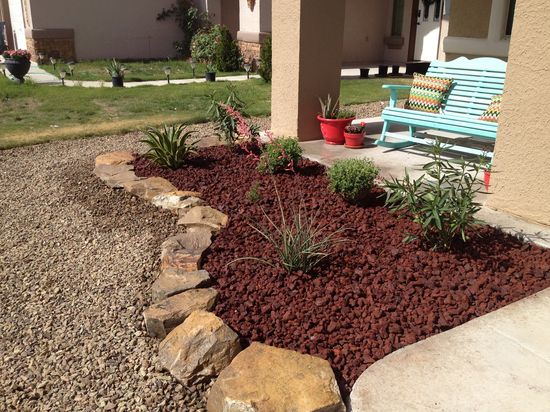
6. Lava Rock
Lava rock, also known as volcanic rock or lava stone, is a type of igneous rock formed from cooled molten lava. It is characterized by its porous texture, lightweight nature, and distinctive reddish-brown to black coloration. Lava rock is commonly used in landscaping for its unique appearance, heat resistance, and low maintenance requirements.
Pros of Lava Rock
- Natural Appearance:
- Lava rock adds a rugged and natural aesthetic to landscapes, with its porous surface and earthy tones blending well with various plants and garden designs.
- Heat Resistance:
- Lava rock is highly heat-resistant, making it suitable for use in areas exposed to high temperatures, such as around fire pits, grills, or outdoor cooking areas.
- Lightweight:
- Compared to other landscaping materials like stone or gravel, lava rock is lightweight, making it easier to handle and transport during installation.
- Excellent Drainage:
- The porous nature of lava rock promotes excellent drainage, allowing water to pass through quickly and preventing soil from becoming waterlogged.
- Weed Suppression:
- When used as a mulch or ground cover, lava rock can help suppress weed growth by blocking sunlight and inhibiting weed germination.
- Longevity:
- Lava rock is durable and resistant to weathering, meaning it can last for many years without needing replacement, reducing long-term maintenance costs.
Cons of Lava Rock
- Sharp Edges:
- Some types of lava rock may have sharp edges, posing a risk of injury, especially in high-traffic areas or play spaces for children and pets.
- Color Fading:
- Over time, the color of lava rock may fade due to exposure to sunlight and weathering, resulting in a less vibrant appearance.
- Limited Availability:
- Lava rock may be less readily available compared to other landscaping materials in certain regions, leading to higher transportation costs or limited selection.
- pH Levels:
- Lava rock can slightly increase soil acidity over time due to its composition, which may not be suitable for plants that require neutral or alkaline soil conditions.
Where and How to Use Lava Rock
Mulch and Ground Cover:
- Use lava rock as a mulch or ground cover in garden beds, pathways, or around trees and shrubs. Its porous texture helps retain moisture in the soil and suppress weed growth.
Decorative Features:
- Incorporate lava rock into rock gardens, dry riverbeds, or decorative borders to add texture and visual interest to the landscape.
Fire Features:
- Surround fire pits, outdoor fireplaces, or grill areas with lava rock to create a fire-resistant barrier and enhance the aesthetic appeal of the space.
Water Features:
- Use lava rock as a decorative element in water features, such as ponds, waterfalls, or fountains, to create a naturalistic look and aid in water filtration.
Soil Amendment:
- Mix crushed lava rock into garden soil to improve aeration, drainage, and water retention, especially in clay-heavy soils.
Pricing
The cost of lava rock varies depending on factors such as size, color, and quantity. Prices typically range from $30 to $100 per cubic yard or $75 to $200 per ton. The following are typical price ranges based on size and type:
- Small Lava Rock (1/4″ – 1/2″): $30 – $50 per cubic yard
- Medium Lava Rock (1/2″ – 1″): $50 – $75 per cubic yard
- Large Lava Rock (1″ – 2″): $75 – $100 per cubic yard
In addition to the cost of the rock itself, consider transportation and delivery fees, which can vary depending on distance and quantity.
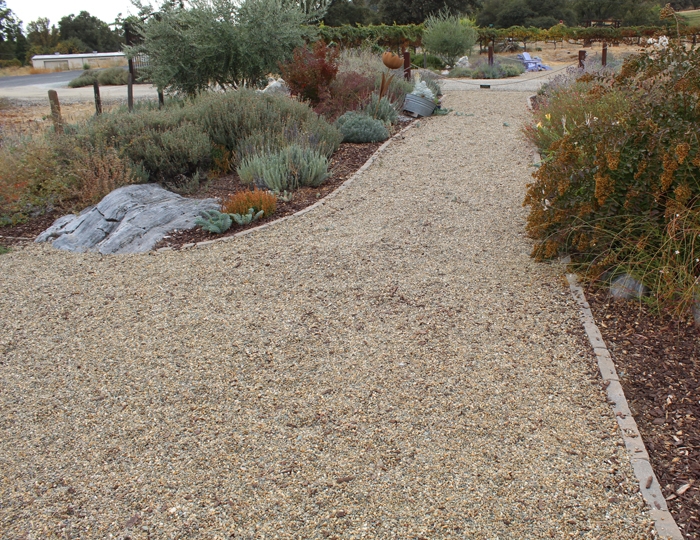
7. Pea Gravel
Pea gravel is a small, rounded gravel typically ranging in size from about 1/8 inch to 3/8 inch. It is characterized by its smooth, pea-sized appearance and is commonly used in landscaping for its versatility, affordability, and decorative appeal. Pea gravel is available in various colors, including shades of brown, gray, white, and multicolor blends, making it suitable for a wide range of outdoor projects.
Pros of Pea Gravel
- Decorative Appeal:
- Pea gravel adds a charming and decorative touch to landscaping projects with its smooth, rounded appearance. It creates a natural, casual look that complements many garden styles.
- Excellent Drainage:
- The small size and rounded shape of pea gravel allow for excellent drainage, making it ideal for use in areas prone to water accumulation or erosion.
- Low Maintenance:
- Pea gravel requires minimal maintenance once installed. It does not need to be replaced regularly and can be refreshed by raking or adding additional gravel as needed.
- Versatility:
- Pea gravel is versatile and can be used for a wide range of landscaping applications, including pathways, patios, garden borders, and decorative accents.
- Soft Surface:
- The smooth texture of pea gravel makes it comfortable to walk on, making it suitable for pathways, play areas, and other areas where barefoot traffic is common.
Cons of Pea Gravel
- Movement:
- Pea gravel can shift and migrate over time, especially in areas with heavy foot traffic or rainfall, leading to uneven surfaces and potential displacement.
- Weed Growth:
- While pea gravel can help suppress weed growth to some extent, it may still allow weeds to emerge through the surface over time, especially if not installed over a weed barrier.
- Tracking:
- Pea gravel can be easily tracked indoors or onto paved surfaces, requiring regular sweeping or maintenance to keep surrounding areas clean.
- Heat Retention:
- In hot climates, pea gravel can absorb and retain heat, making it uncomfortable to walk on barefoot during the summer months.
Where and How to Use Pea Gravel
Pathways and Walkways:
- Create charming garden pathways and walkways using pea gravel. Its smooth texture provides a comfortable surface for walking and adds visual interest to the landscape.
Patios and Outdoor Living Areas:
- Use pea gravel as a base material for patios and outdoor living areas, providing excellent drainage and a stable foundation for furniture and outdoor activities.
Garden Borders and Edging:
- Define garden beds and borders with pea gravel, adding a decorative touch while helping to keep soil in place and suppress weed growth.
Decorative Accents:
- Use pea gravel as a decorative accent in garden beds, pots, or water features, adding texture and visual interest to the landscape.
Drainage Solutions:
- Incorporate pea gravel into drainage solutions, such as French drains or dry wells, to improve water flow and prevent erosion in low-lying or waterlogged areas.
Pricing
The cost of pea gravel varies depending on factors such as size, color, and quantity. Prices typically range from $30 to $100 per cubic yard or $50 to $150 per ton. The following are typical price ranges based on size and type:
- Small Pea Gravel (1/8″ – 1/4″): $30 – $50 per cubic yard
- Medium Pea Gravel (1/4″ – 3/8″): $50 – $75 per cubic yard
- Large Pea Gravel (3/8″ – 1/2″): $75 – $100 per cubic yard
In addition to the cost of the gravel itself, consider transportation and delivery fees, which can vary depending on distance and quantity.
Are there any additional costs for landscaping rock ?
In addition to the cost of the rocks themselves, there are several potential additional expenses to consider when using these seven types of landscaping rocks:
- Delivery and Transportation:
- Depending on the quantity of rocks needed and the distance to the project site, delivery fees may apply. Larger quantities or heavier rocks may require special transportation arrangements, which can increase costs.
- Installation Labor:
- While some DIY enthusiasts may choose to install landscaping rocks themselves, hiring professionals for larger projects or intricate designs can incur labor costs. Installation labor may include excavation, leveling, compaction, and precise placement of the rocks.
- Equipment Rental:
- Certain landscaping projects may require the use of heavy equipment, such as skid steers, excavators, or compaction machines, for site preparation and installation. Renting this equipment can add to the overall project cost.
- Weed Barrier Fabric:
- To prevent weed growth and maintain the integrity of the rock installation, it’s common to lay down weed barrier fabric beneath the rocks. The cost of this fabric depends on the size of the area to be covered and the quality of the material.
- Edging Material:
- Edging materials, such as metal, plastic, or stone, may be necessary to contain the rocks and create defined borders or pathways. The cost of these edging materials varies depending on the type, length, and quality.
- Site Preparation:
- Proper site preparation is essential for successful rock landscaping projects. This may include grading, leveling, and compacting the soil to ensure a stable foundation for the rocks. Site preparation costs can vary based on the condition of the existing landscape and the complexity of the project.
- Maintenance Supplies:
- While many landscaping rocks require minimal maintenance, occasional upkeep may be necessary to preserve their appearance and functionality. This can include tools for raking or leveling the rocks, as well as cleaning supplies to remove debris or stains.
- Sealing or Binding Agents:
- In some cases, such as with crushed stone or decomposed granite, using binding agents or sealants may be recommended to stabilize the surface and prevent erosion or shifting. These products typically incur additional costs and may require periodic reapplication.
- Safety Precautions:
- Depending on the type of rocks and the intended use, additional safety measures may be required, such as installing barriers or signage to prevent accidents. These safety precautions can contribute to the overall project expenses.
Considering these additional costs alongside the price of the rocks themselves can help ensure an accurate budget for landscaping projects involving these versatile and aesthetically pleasing materials.
How do you think you can choose the best landscaping rocks for your landscape ?
Choosing the best landscaping rocks involves considering several factors to ensure they complement your outdoor space while meeting functional requirements. Here’s a guide to help you select the right rocks for your landscaping project:
1. Consider Your Landscape Design:
- Style and Theme: Determine the overall style and theme of your landscape design. Are you aiming for a natural, rustic look, or do you prefer a more modern and minimalist approach?
- Color Palette: Choose rocks that complement the existing color scheme of your landscape, including the colors of your plants, hardscaping elements, and surrounding architecture.
- Texture and Shape: Consider the texture and shape of the rocks and how they will interact with other elements in your landscape. Smooth, rounded rocks may suit a tranquil garden setting, while angular rocks can add a sense of drama and contrast.
2. Assess Functional Needs:
- Drainage Requirements: If drainage is a concern in your landscape, opt for rocks with excellent drainage properties, such as gravel or crushed stone, to prevent water pooling and erosion.
- Erosion Control: In areas prone to erosion, choose larger rocks or boulders to stabilize slopes and retain soil. Consider incorporating rocks into retaining walls or terraces to address erosion issues effectively.
- Foot Traffic: For pathways, seating areas, or play spaces, select rocks that are comfortable to walk on and will withstand frequent foot traffic without shifting or becoming uneven.
3. Evaluate Maintenance Preferences:
- Low Maintenance: If you prefer minimal upkeep, choose rocks that require little maintenance, such as lava rock or pea gravel. These options typically only need occasional raking or replenishment to maintain their appearance.
- High Traffic Areas: In high-traffic areas, opt for durable rocks that can withstand heavy use without deteriorating. Consider using larger stones or boulders for added stability and longevity.
- Weed Control: Select rocks that can help suppress weed growth if weed control is a priority. Installing a weed barrier fabric beneath the rocks can further reduce maintenance requirements.
4. Budget Considerations:
- Cost: Evaluate the cost of different types of landscaping rocks and consider your budget constraints. Keep in mind that while some rocks may have a higher initial cost, they may offer long-term benefits such as durability and low maintenance.
- Additional Expenses: Factor in any additional costs related to delivery, installation labor, equipment rental, and maintenance supplies when budgeting for your landscaping project.
5. Local Availability and Climate:
- Local Availability: Consider the availability of landscaping rocks in your area. Choosing locally sourced materials can help reduce transportation costs and environmental impact.
- Climate Considerations: Take into account the climate and weather conditions in your region. Select rocks that are suitable for your climate, such as heat-resistant options for hot, sunny areas or frost-resistant rocks for cold climates.
6. Seek Professional Advice:
- Consult Landscaping Experts: If you’re unsure about which rocks to choose or how to incorporate them into your landscape, you can consider consulting with us for expert advice and recommendations. We also provide all sorts of landscaping services which can save you from all the hassle of installation labor and you can get all of the services within one service provider.
TIPS FOR MAINTAINING YOUR LANDSCAPE ROCKS
Maintaining landscaping rocks is relatively straightforward, but regular care and attention can help preserve their appearance and functionality over time. Here are some tips for maintaining landscaping rocks:
1. Regular Cleaning:
- Remove Debris: Periodically remove leaves, twigs, and other debris that accumulate on the surface of the rocks using a leaf blower, rake, or broom.
- Pressure Washing: Use a pressure washer to clean stubborn dirt, stains, or algae growth from the rocks. Adjust the pressure settings to avoid damaging the rocks or surrounding surfaces.
2. Weed Control:
- Weed Barrier: Install a weed barrier fabric beneath the rocks to prevent weed growth. Check the barrier periodically for tears or damage and repair as needed.
- Manual Weeding: Routinely inspect the rocks for any weeds that may emerge through the surface and manually remove them to prevent them from taking root.
3. Replenishment:
- Top Dressing: Over time, landscaping rocks may settle or disperse due to foot traffic, rainfall, or other factors. Periodically add a fresh layer of rocks to replenish the surface and maintain its appearance.
- Mulch Replacement: If using rocks as mulch in garden beds, replace any displaced rocks or add new rocks as needed to maintain coverage and weed suppression.
4. Edging and Containment:
- Check Edging: Inspect the edging materials, such as metal, plastic, or stone borders, to ensure they are intact and secure. Repair or replace damaged edging to contain the rocks and maintain defined borders.
- Containment: Regularly check for signs of rock migration or spreading beyond designated areas. Use containment methods, such as additional edging or landscaping fabric, to prevent rocks from spreading into adjacent areas.
5. Preventive Maintenance:
- Inspect for Damage: Periodically inspect the rocks for signs of damage, such as cracks, chips, or discoloration. Address any issues promptly to prevent further deterioration.
- Sealants: Consider using sealants or binding agents to stabilize the surface of certain types of rocks, such as crushed stone or decomposed granite, and prevent erosion or shifting.
6. Safety Measures:
- Safety Precautions: Take precautions to ensure the safety of yourself and others when maintaining landscaping rocks. Wear appropriate protective gear, such as gloves and safety goggles, especially when using power tools or chemicals.
7. Seasonal Considerations:
- Winter Protection: In colder climates, consider protecting landscaping rocks from potential damage caused by freezing and thawing cycles. Avoid using de-icing salts or chemicals that may harm the rocks or surrounding vegetation.
- Summer Maintenance: During hot, dry weather, water the rocks occasionally to prevent dust buildup and keep the surface cool. Avoid excessive watering, which can promote algae growth or cause erosion.
What do you think? What is the cheapest rock to use for landscaping for you and your landscape?
This question prompts the reader to reflect on their own situation and preferences when it comes to choosing the most cost-effective landscaping rock for their specific needs. It invites them to consider factors such as their budget, the size of their project, and the desired aesthetic outcome. By engaging the reader directly, you encourage them to actively participate in the discussion and share their insights or experiences with selecting landscaping rocks.
